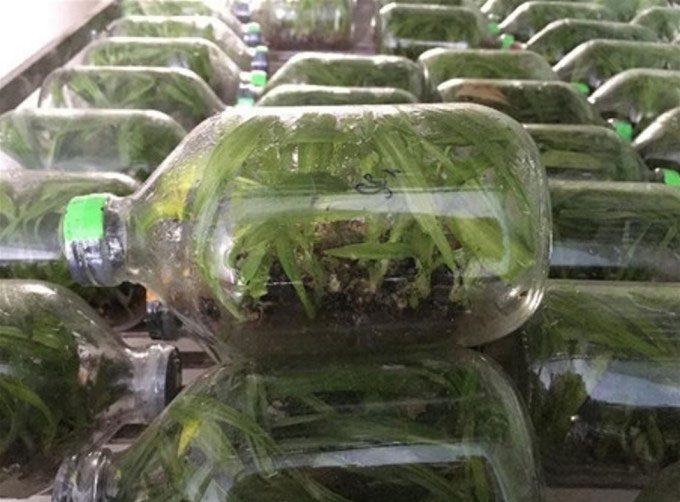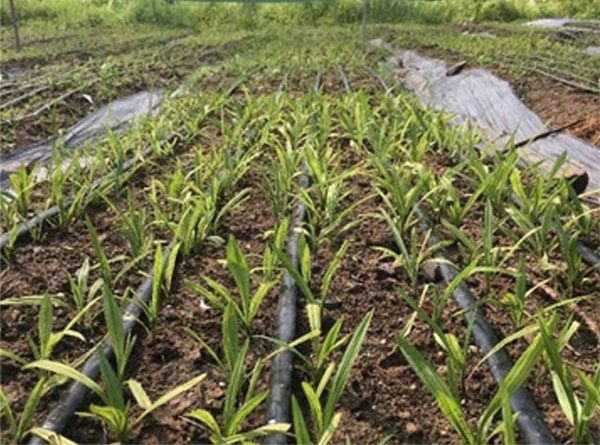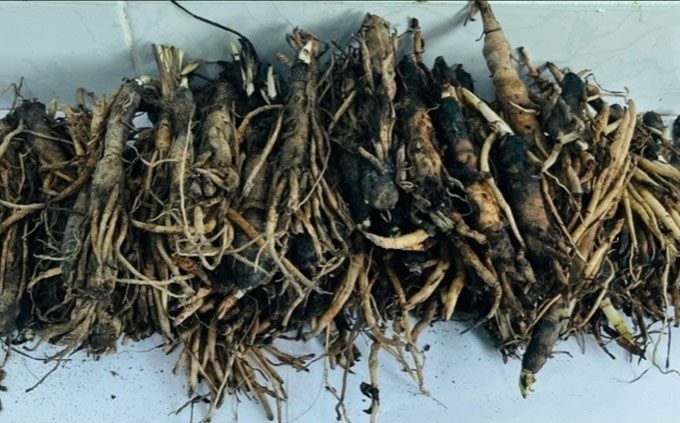The Curculigo orchioides, commonly known as Golden Eye Grass, is a plant rich in valuable medicinal compounds such as saponins and flavonoids. Researchers have successfully propagated this plant using tissue culture technology.
Curculigo orchioides belongs to the Hypoxidaceae family and is also referred to as Tiêm mao, Ngải cau, Cô nốc lan. Historically, it was abundant in the wild.
Studies have shown that this plant contains numerous valuable compounds that traditional medicine utilizes for treating male physiological disorders, asthma, diarrhea, hypoglycemia, chronic nephritis, cancer prevention, and skin diseases. Due to extensive harvesting in the 1980s, this species was listed in the Red Data Book and the Red List of medicinal plants in Vietnam.
To enhance economic value and ensure conservation, a research team at the High-Tech Agricultural Business Incubator Center in Ho Chi Minh City (Phạm Văn Cội Commune, Củ Chi District) has developed a method for tissue culture to maintain this precious medicinal resource.

Curculigo orchioides cultivated from tissue culture. (Photo: NVCC).
Engineer Lê Thị Hồng Ngọc, Deputy Head of Plant Technology Support, representing the research team, stated that after nearly a year, they have successfully cultivated the plant in the laboratory. This variety is being experimentally grown over an area of 1,000 square meters in Củ Chi District.
Tissue-cultured plants are grown in bags and placed in a nursery to acclimate to natural conditions. The team has established a cultivation process for Curculigo orchioides with a harvest timeline of approximately one year.
According to the research team, Curculigo orchioides is a shade-tolerant plant, so it requires shading. A shading net providing 50% coverage is ideal for the plant’s growth, development, and optimal yield. The ideal habitat for Curculigo orchioides is in shaded, moist valleys with fertile soil, at the foot of limestone mountains or near fields. The recommended planting density is 50,000 plants per 1,000 square meters.

Experimental garden for cultivating Curculigo orchioides by the research team. (Photo: NVCC).
Engineer Ngọc noted that during the tuber development phase, water and soil moisture levels must be closely monitored, especially during the rainy season. “The tubers are very susceptible to rot if they are waterlogged or if the soil is excessively moist; therefore, during land preparation, drainage ditches and movable shading canopies should be created,” she explained.
After one year of cultivation, farmers can harvest the plants, cut the tubers, and wash them. Curculigo orchioides can be used fresh or processed for preservation, with an average tuber weight of 60-65 grams. The saponin content ranges from 0.54 to 0.68%, flavonoids from 0.19 to 0.23%, and curculigoside from 0.23 to 0.31%.
When sold at the farm, the price of Curculigo orchioides is about 150,000 VND per kilogram. Based on an average yield of 3.1 tons for 1,000 square meters, the income could reach approximately 467 million VND per harvest season. The total production cost is around 416 million VND, providing farmers with a profit of over 51 million VND. After one year of planting, farmers can realize a profit.
After harvesting the tubers, the shoots can be used for replanting, helping to save production costs for the next season. According to the research team, the areas of Ho Chi Minh City, neighboring provinces, or regions with similar natural conditions can cultivate Curculigo orchioides using this method.

Curculigo orchioides tubers harvested from tissue-cultured plants. (Photo: NVCC).
Ms. Nguyễn Thị Huệ, Deputy Director of the High-Tech Agricultural Business Incubator Center, assessed the research as feasible, bringing economic and social value. In the near future, the unit will implement models for tours and learning experiences and is ready to transfer this technology to organizations or individuals interested.


















































